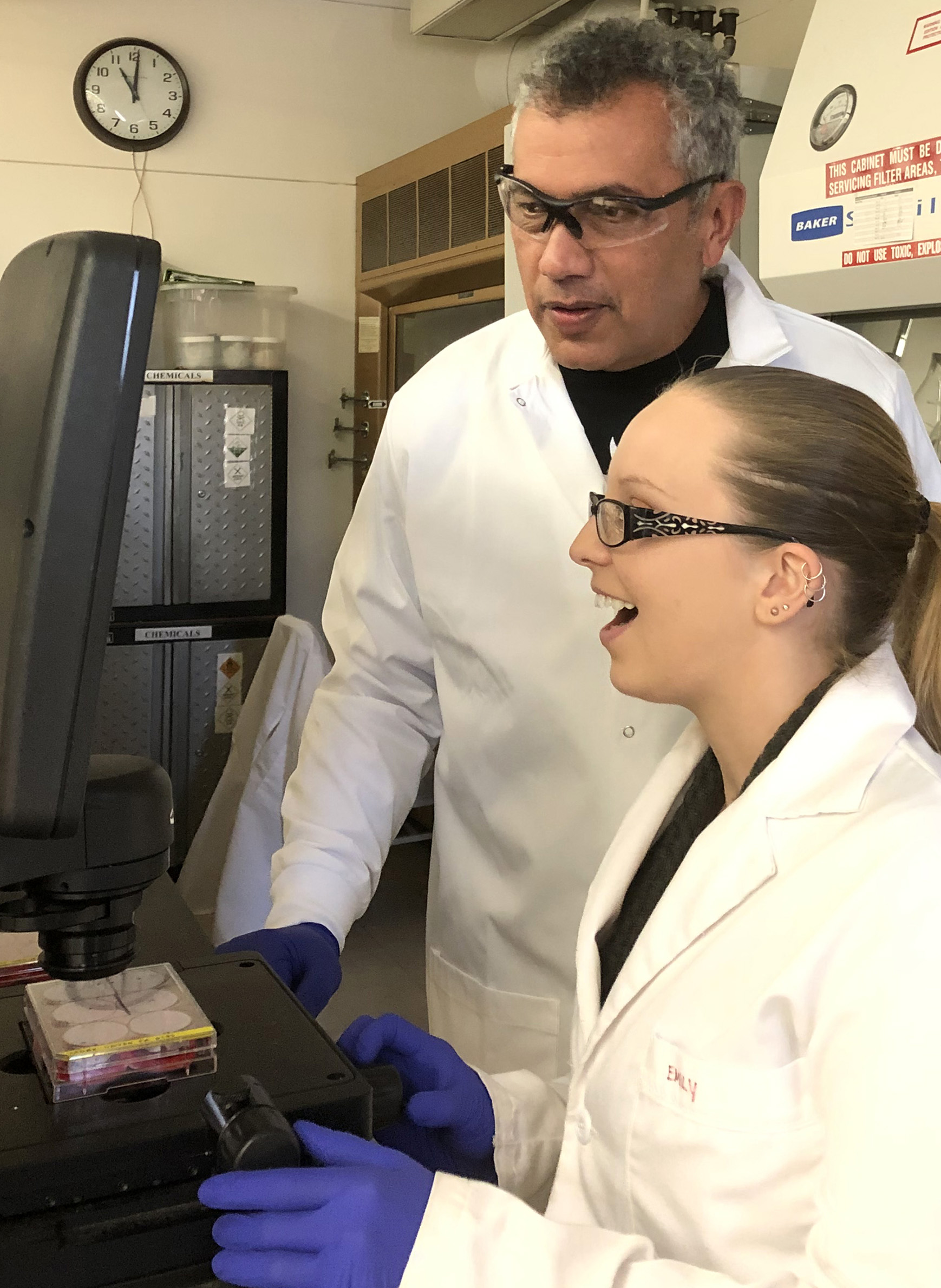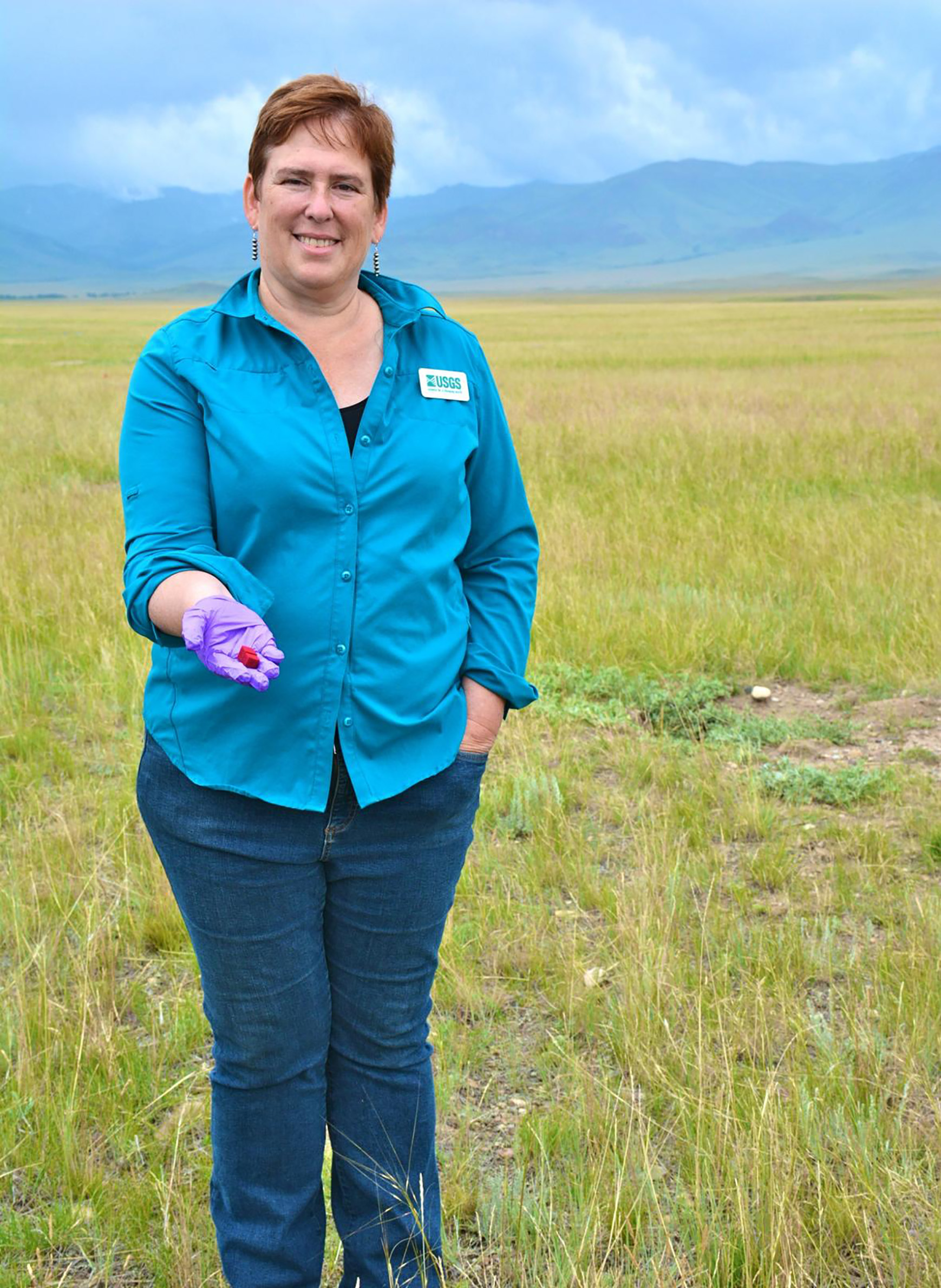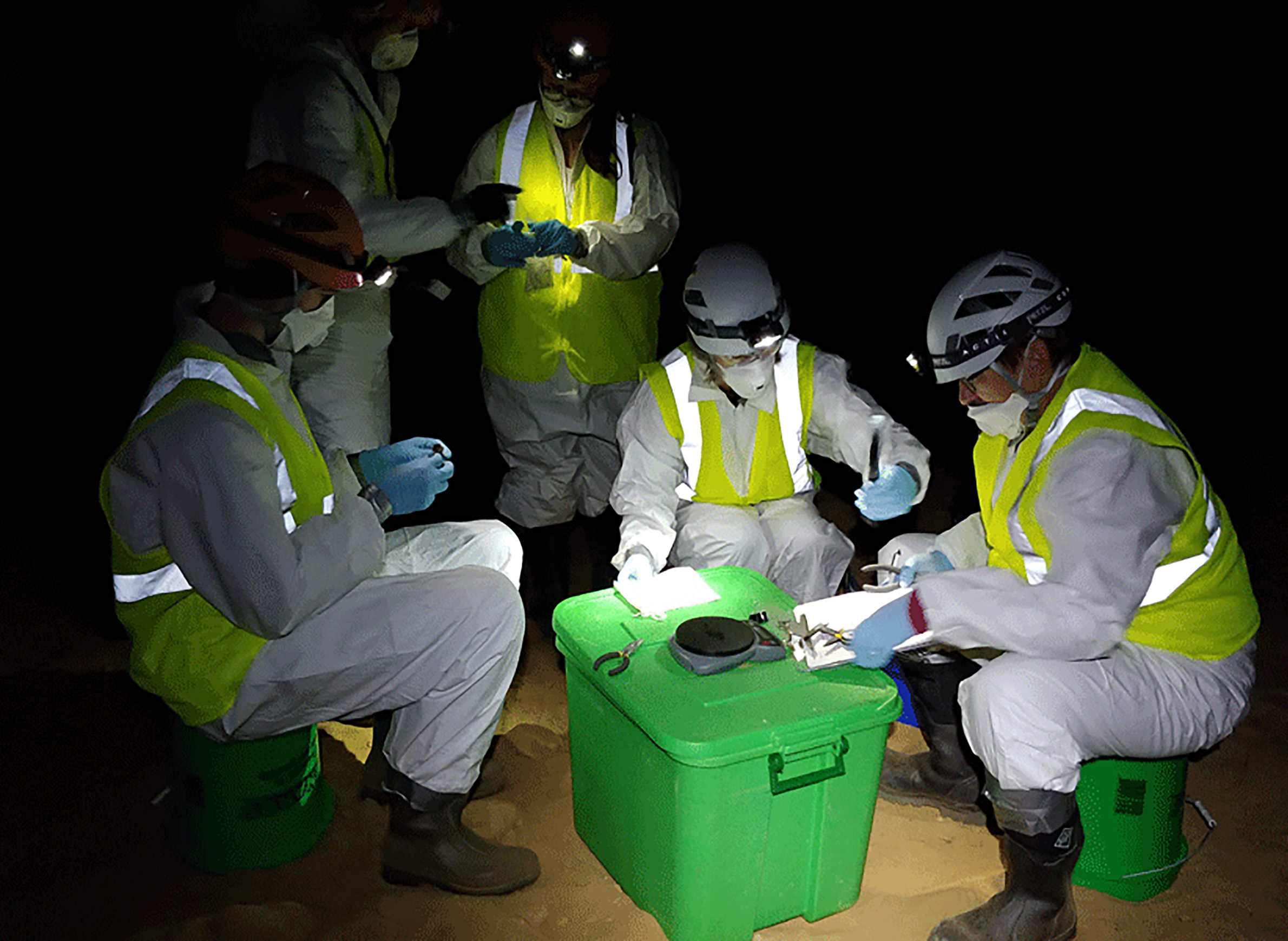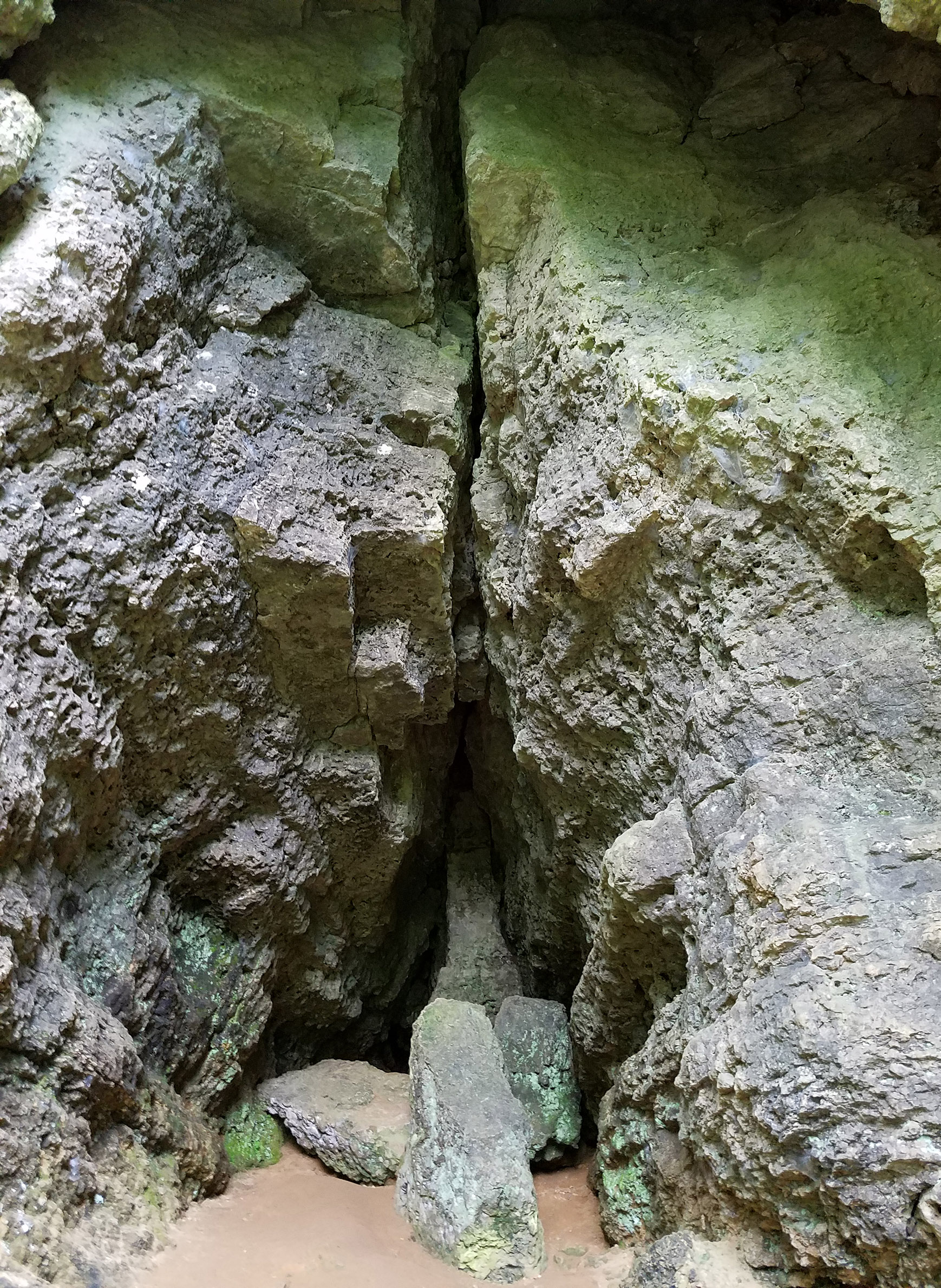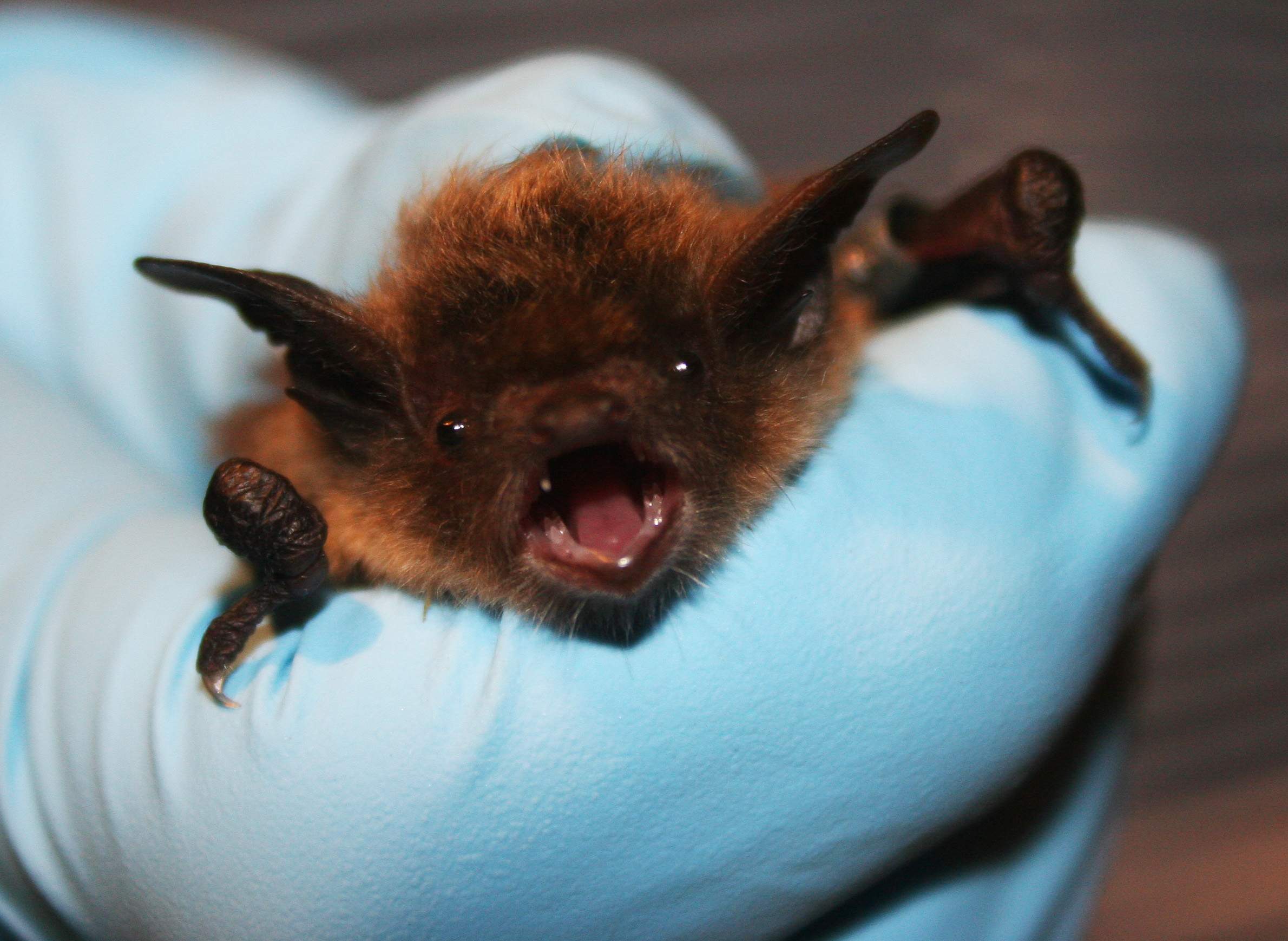
The Scientific Frontier Of Vaccinating Bats Against A Deadly Fungus

Wisconsin scientists are hopeful that a raccoon virus may help deliver North America's hibernating bats from potential extinction.
The virus — known as raccoon pox — easily infects bats but is otherwise harmless to them. It's also quite large, at least for a virus, and has a malleable shape for genetic alteration.
These qualities make the raccoon pox virus a promising delivery vehicle for a potential vaccine against Pseudogymnoascus destructans, the invasive fungus from Eurasia spreading across North America and killing bats while they hibernate. The powdery white fungus grows on bats' skin in an infection known as white-nose syndrome that disrupts their hibernation, usually with fatal consequences.
In an indication of the urgency of this disease's unprecedented impact, a group of researchers based in Madison are attempting what would be an extraordinary feat: development of a successful wildlife vaccine against a fungal infection.
"There are very few fungal vaccines, even in humans," explained Tonie Rocke, a United States Geological Survey research scientist at the National Wildlife Health Center in Madison.
"They're sort of considered a last frontier in immunology," she said.
Rocke has devoted her 30-year career to devising various methods for managing wildlife diseases. This work includes leading the successful development of an oral vaccine for sylvatic plague in prairie dogs.
But plague is a bacterial disease. There is a long history of vaccines that successfully protect humans against harmful bacteria like the ones that cause typhoid fever, tetanus and tuberculosis.
Vaccines against fungi, on the other hand, are few and far between, and not without cause: they're tough to develop.
"This is far more challenging than anything else I've worked on," said Rocke.
Immunology's final frontier
A central challenge to developing a fungal vaccine is a simple lack of precedent. There are few successful examples on which to build. This limitation is to some extent because fungi have historically posed a smaller health threat to humans than disease-causing bacteria and viruses, thanks to the human immune system's robust response to fungi.
But this threat has changed in recent decades as a growing number of people are immunosuppressed as a result of diseases like AIDS and medical treatments like chemotherapy. A subsequent rise in serious fungal infections among humans with compromised immune systems has researchers searching for new approaches for developing vaccines against fungi.
One of those researchers is Bruce Klein, a physician and professor in the Department of Medical Microbiology and Immunology and chief of the pediatric infectious disease division at the University of Wisconsin School of Medicine and Public Health. Klein’s research includes identifying the molecules within various fungi that elicit an immune response.
These molecules, which are usually proteins, are called antigens. They form the foundation of vaccines. Typically, an animal that has been exposed to an antigen will have an immune response that produces antibodies that seek out and destroy future disease-causing organisms associated with the antigen in a vaccine.
Researchers from multiple groups, including Klein's lab in Madison, identified at least two antigens in the white-nose syndrome fungus that lead to a protective immune response in mammals like mice.
Enter the raccoon pox virus, which another UW-Madison research group genetically altered to carry the potentially protective antigens. That group is headed by Jorge Osorio, a professor in the Department of Pathobiological Sciences at the UW-Madison School of Veterinary Medicine. His lab specializes in developing viral vehicles for vaccine delivery.
Osorio said raccoon pox works nicely in this case because it is highly infectious in bats without producing adverse symptoms, and also because it's a very large virus and has a genome that can easily expand to fit multiple fungus genes that produce the protective antigens.
"Some viruses have limitations on the number of genes that can be inserted into them because of their shape, which is like a box that can't grow," Osorio said.
On the other hand, the raccoon pox virus can be thought of more as a balloon, he said. It has a specific shape but can easily expand to accommodate inserted genes.
Yet, developing a potential vaccine has been only part of the challenge facing the multidisciplinary group.
Bats make for challenging lab animals
Another major hurdle has been testing a potential vaccine's effectiveness in bats.
"We don't have a good animal model for white-nose syndrome in bats," National Wildlife Health Center scientist Tonie Rocke said. "We can't use lab mice, for instance, which is what's usually done when you're trying to develop a new vaccine."
That's due to bats' unique habits and physiology, along with the fact that white-nose syndrome develops during hibernation, and lab mice don't hibernate.
Instead, Rocke's team has had to figure out ways to keep bats alive in a lab setting and simulate hibernation. This has involved training the bats to eat mealworms in captivity as opposed to their staple diet of mosquitoes and other insects that they would normally gobble up in flight. Another major challenge has been to mimic the environments bats need to hibernate, which have specific temperature, lighting and humidity requirements.
There's also no research to draw on to understand the physiological changes that might occur in bats used as lab animals, Rocke said, clouding any potential results from the group's vaccine trials.
Still, in May 2019 the group published findings from two vaccine trials that point to potential hope for North America's hibernating bats.
In those trials, groups of little brown bats (Myotis lucifugus) caught from the wild received either oral or injected vaccines with several different antigen combinations. Little brown bats were chosen for the trials because they are highly susceptible to white-nose syndrome and, despite their populations plummeting in Wisconsin, remain in relative abundance compared to other species.
The bats were then exposed to the white-nose syndrome causing fungus and subsequently placed in hibernation chambers, where Rocke and her colleagues watched the progression of the disease over weeks and months.
Though many of the bats likely died as a result of issues related to captivity, after the two trials the team was able to assert with some statistical confidence that the animals treated with vaccines were generally more resistant to the white-nose syndrome infection than were bats in the control group that received no vaccination. In other words, the antigens present within the vaccines, while no silver bullet, seemed to help vaccinated bats fight the fungal infection enough to possibly survive hibernation.
It's enough to make Rocke "cautiously optimistic" about the team's ability to eventually create a more protective vaccine.
"It's a work in progress, but I'm hopeful we'll see improvement this winter," she said. "We're going to just continue to look for the most optimal vaccine that we can."
That work will include identifying other potentially protective antigens from P. destructans.
"I'm optimistic that vaccination could work if we find the right combination of antigens," Rocke said.
Hurdles to deployment
Even if researchers identify a successful vaccine in the near future, deploying it in the wild would be one more major logistical hurdle to cross. Individually immunizing each bat would be impossible, so one idea is to develop a vaccine in a liquid or gel form that can be applied en masse to bats, perhaps in the form of a spray administered as they fly into a cave or out of a roosting site.
"Bats are very fastidious about grooming anything that gets on them," Tonie Rocke said. "We've already tried this with gels that just contain a biomarker [and] no vaccine. We know if you coat [the bats] … or spray it on them, they'll lick it off and then hopefully they'll be vaccinated that way."
Challenges notwithstanding, a vaccine is likely to be one of the most practical control methods for white-nose syndrome given that other proposed methods, such as killing or controlling the fungus with topical solutions or UV light, could alter sensitive cave ecosystems and face their own major logistical barriers.
"We know so little about the cave environment anyway," Rocke said. "A vaccine would just alter host immunity, and the [bat] itself would develop an immune response, and hopefully would carry that for life against the disease."



